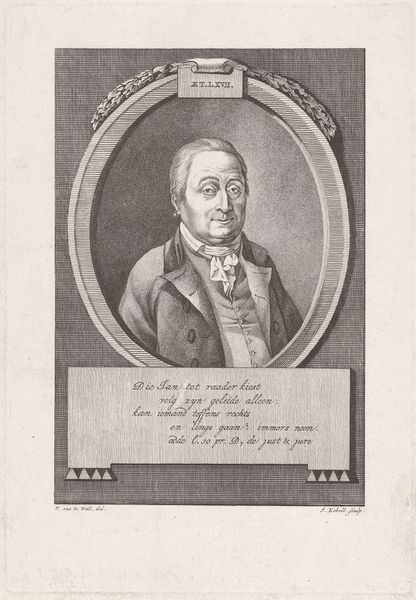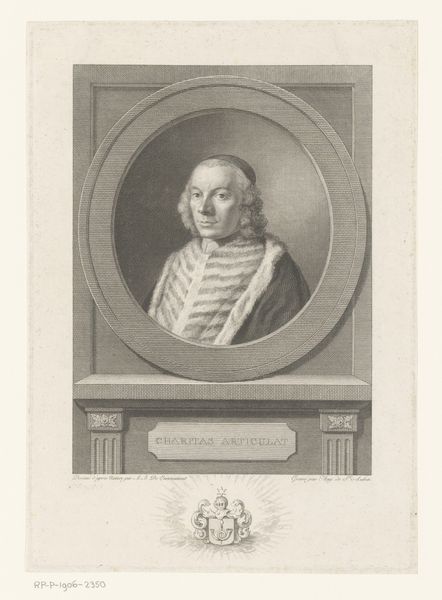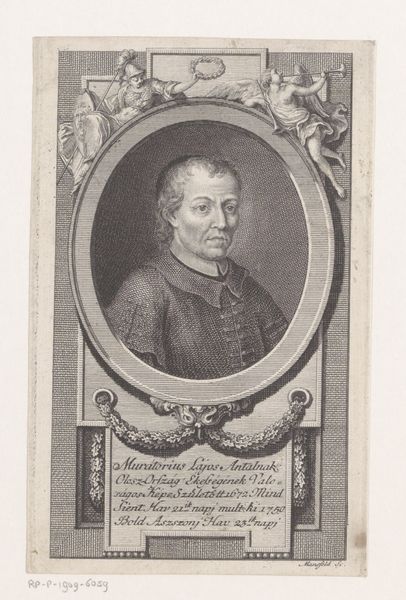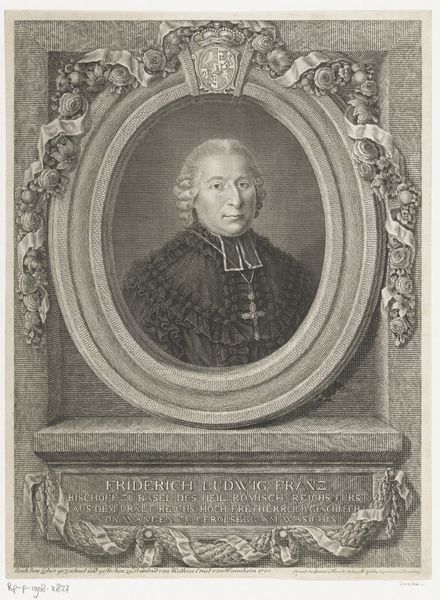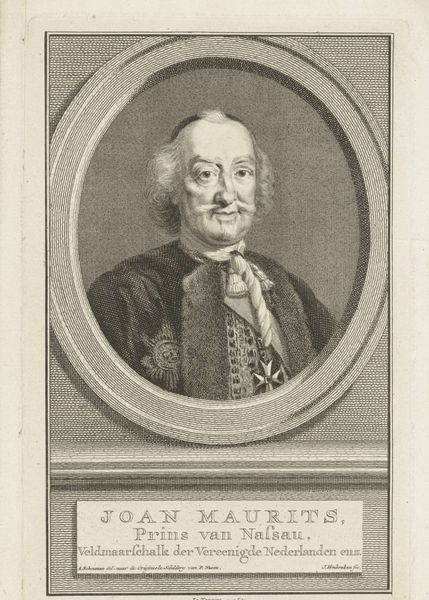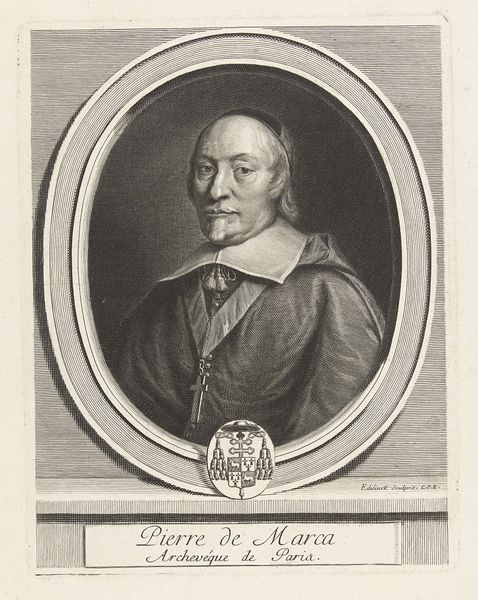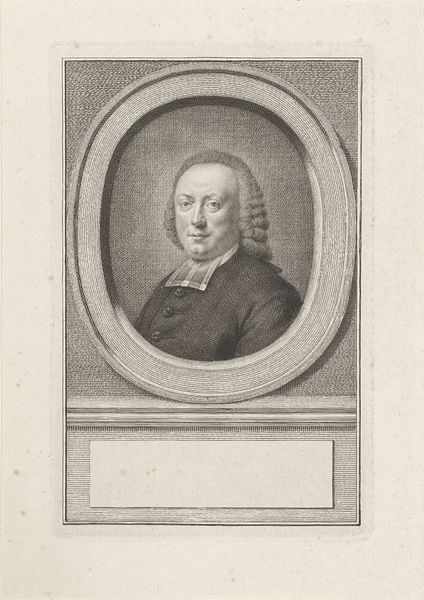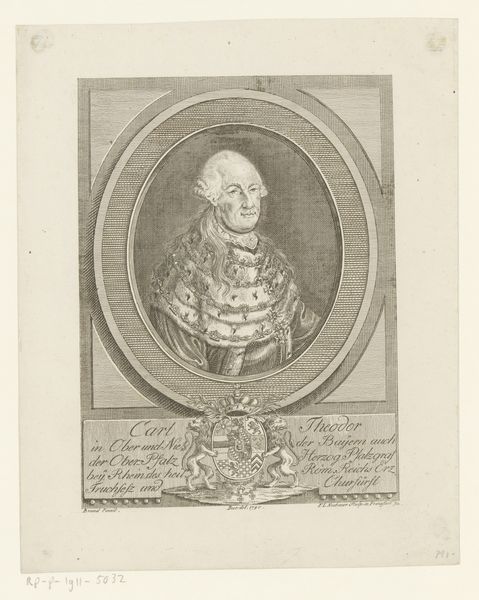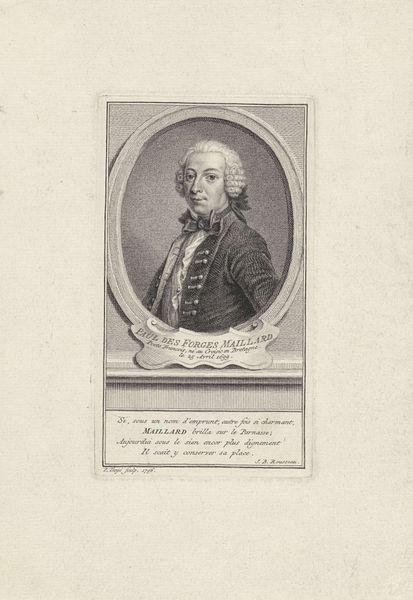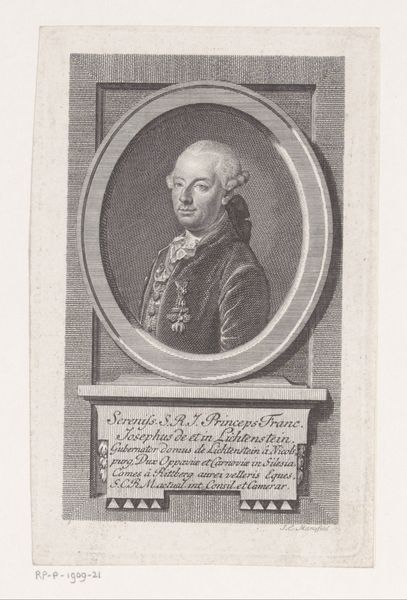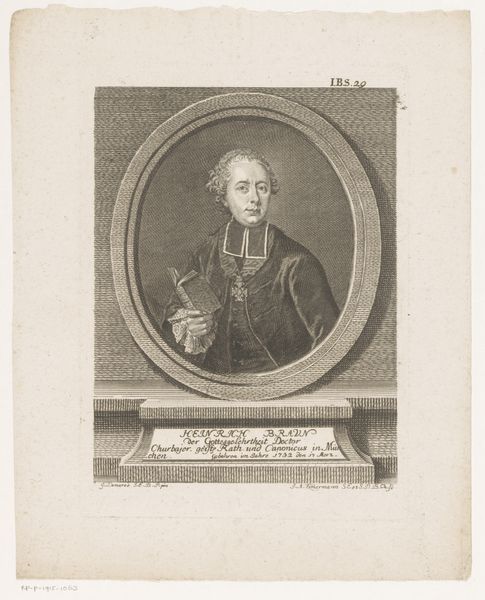
Dimensions: height 321 mm, width 218 mm
Copyright: Rijks Museum: Open Domain
Curator: Here we have a portrait of Aalbert Wels, a print created around 1788. It’s currently held in the Rijksmuseum collection. Editor: My immediate impression is one of poised contemplation, conveyed through its balanced composition, a very serene and controlled emotional atmosphere, despite its rather modest scale. Curator: Indeed. The formal aspects speak to that. Notice the oval frame and rectangular outer border, each adorned with decorative elements. The sharp lines of the engraving contrast nicely with the curvature suggesting a considered formalism. The print employs line work and tonal art principles quite expertly. Editor: From a historical perspective, Wels was, as the inscription states, the Director of the Patriotic Society in Rotterdam. These societies emerged during a time of political upheaval in the Netherlands, advocating for reform. This print, then, wasn't just a likeness, but a piece of political communication. Curator: Precisely, the gaze is rather self-assured, the placement of his hands are both relaxed and purposeful, as if to present himself, but also what he is holding. The rolled-up paper surely signifies his intellectual or professional life. Also, the books in the background, do they not suggest education? And importance through being associated with knowledge? Editor: Without question. The text beneath the portrait seems celebratory, almost a eulogy despite the subject being alive at the time. Such prints often served to immortalize figures, aligning them with ideals of enlightenment and civic virtue. Look at his medal – that undoubtedly signals an affiliation or honour of societal importance. Curator: Notice how his face is brought forward through careful shading. How that shadow pulls the viewer toward his facial expression… Editor: Exactly, the framing and text function together to solidify Wels's public image, very clearly crafted for distribution and remembrance within his circle. Curator: Considering the careful design and controlled application of values, this is no mere representation, but a constructed image intended to impart certain qualities onto the subject. Editor: It’s a visual argument as much as a likeness, a testament to the power of portraiture in shaping historical memory. Curator: Considering all this, what this engraving lacks in bombast, it more than makes up for in the carefully managed dissemination of information and controlled design elements. Editor: I find the interplay of those elements makes engaging with its history particularly enriching.
Comments
No comments
Be the first to comment and join the conversation on the ultimate creative platform.
